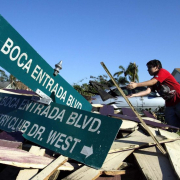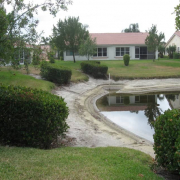Be Prepared: Why We Can’t Afford Complacency
The aftermath of a major storm in Florida can be unforgettable: blue-tarped roofs, piles of yard debris awaiting collection, and the absence of electricity, air conditioning, or clean water. Yet, these memories often fade as life returns to normal. However, for many Floridians, this period of calm can stretch on for years.
The last significant hurricane to impact our region was Wilma in October 2005. As time passes, people tend to forget the hardships of past events. Additionally, newcomers to the area may have never experienced a severe storm, leading to a sense of complacency and procrastination when it comes to emergency planning. However, the tranquility before the storm can swiftly change.
South Florida is renowned not only for hurricanes but also for sudden, intense thunderstorms that can bring torrential downpours any time of year. For instance, in January 2014, more than 15 inches of rain deluged a localized area within hours, causing severe flooding, property damage, and tragic loss of life.
It is crucial for residents to maintain year-round preparedness. This includes regularly checking and replenishing essential supplies like emergency food stocks, water storage, flashlights, and other necessities. Residents should also develop and maintain an evacuation plan, accounting for pets and family members with mobility challenges. Additionally, ensuring insurance policies are current and important documents are readily accessible is essential.
While we hope to navigate through the 2024 hurricane season unscathed, it’s inevitable that our luck may eventually run out. The importance of sustained preparation will then become strikingly evident. Valuable resources for emergency planning information can be accessed at www.ready.gov.






